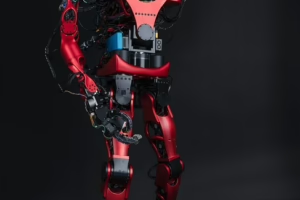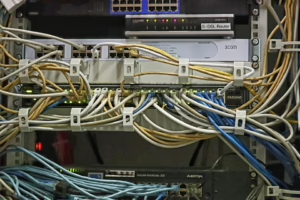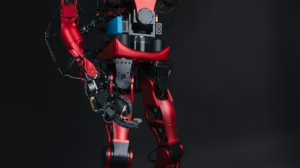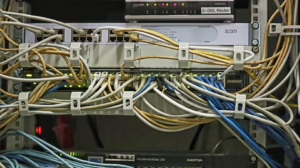Challenges and Triumphs: The Evolving Landscape of Mechatronics Engineering
Introduction
Mechatronics engineering is a multidisciplinary field that blends mechanical engineering, electronics, computer science, and control engineering to create intelligent systems and products. Today, it plays a crucial role in the design and development of everything from robotics to automation systems in various industries such as manufacturing, automotive, aerospace, and healthcare. The landscape of mechatronics engineering is continuously evolving, driven by advancements in technology, changing market demands, and the need for sustainable solutions. This article explores the challenges and triumphs faced by professionals in the field, providing insights into how mechatronics engineering is adapting to meet contemporary needs and anticipating future developments.
Historical Perspective
The Birth of Mechatronics
The term “mechatronics” was coined in Japan in the 1960s to describe the synergistic integration of mechanical and electronic engineering. Early applications included robotics, where basic mechanical structures were enhanced with electronic sensors and controls to perform specific tasks. Over the decades, as microcontrollers became more affordable and powerful, mechatronics systems grew increasingly sophisticated, enabling greater automation in industrial processes.
Milestones in Mechatronics Engineering
- 1970s – 1980s: Advancements in digital control systems revolutionized manufacturing, facilitating the development of CNC (computer numerical control) machines and robotics.
- 1990s: The emergence of the Internet paved the way for smart devices and the concept of the Internet of Things (IoT), connecting machines and systems globally.
- 2000s – Present: Rapid developments in AI, machine learning, and big data analytics have transformed mechatronics, making systems smarter and more autonomous.
Current Landscape of Mechatronics Engineering
The current state of mechatronics is characterized by rapid innovation and diversified applications. Here are some key sectors where mechatronics is making a significant impact:
1. Robotics and Automation
The demand for automation in manufacturing and service industries has skyrocketed, especially in the wake of the COVID-19 pandemic. Mechatronics plays a pivotal role in designing robots that can perform complex tasks with precision and efficiency. This includes assembly lines in manufacturing and autonomous robots in warehouses and logistics.
Challenges:
- Integration: Combining different technologies (mechanical, electrical, and software) into a cohesive system often presents technical hurdles.
- Safety: Ensuring the safety of human workers in collaborative environments is paramount and requires rigorous testing and regulation.
Triumphs:
- Increased Productivity: The integration of automated systems has led to significant increases in production rates and efficiency.
- Innovative Applications: Advances in artificial intelligence have enabled the development of robots that can learn and adapt to new situations, broadening their application range.
2. Automotive Engineering
The automotive industry is embracing mechatronics to develop advanced driver-assistance systems (ADAS), electric vehicles (EVs), and fully autonomous vehicles. Electric and hybrid vehicles specifically require innovative mechatronic systems for energy management, HVAC control, and powertrain operation.
Challenges:
- Complexity: The complexity of integrating software and hardware in vehicles poses significant design and testing challenges.
- Regulatory Compliance: Adherence to stringent safety and environmental regulations is essential and can vary by region.
Triumphs:
- Sustainability: Advancements in battery technology and energy management systems are leading to more sustainable automotive solutions.
- Enhanced Safety: Innovations in mechatronic systems have reduced road fatalities through enhanced safety features and autonomous emergency braking systems.
3. Aerospace Engineering
Mechatronics is integral to modern aerospace engineering, contributing to the design of aircraft control systems, autopilots, and maintenance robots. With the advent of UAVs (unmanned aerial vehicles) and drones, the applications of mechatronics in aerospace have expanded significantly.
Challenges:
- Weight Constraints: Aerospace components must be lightweight yet durable, presenting unique design challenges.
- Reliability: Aerospace systems must meet high reliability standards, as failures can result in catastrophic consequences.
Triumphs:
- Innovation in UAVs: Drones powered by advanced mechatronic systems are being utilized in various fields, from agriculture to disaster response.
- Autonomous Flight: The development of automated navigation and control systems is paving the way for more autonomous aircraft.
4. Healthcare Technology
In healthcare, mechatronics is used to develop medical devices such as surgical robots, rehabilitation equipment, and prosthetics. The integration of sensors and actuators helps create devices that improve patient outcomes and enhance the capabilities of medical professionals.
Challenges:
- Regulatory Hurdles: The medical field is heavily regulated, and meeting these standards involves extensive testing and validation.
- User Acceptance: Practitioners and patients may resist adopting new technologies that require a learning curve or changes in workflow.
Triumphs:
- Precision Medicine: Surgical robots have enhanced precision in surgeries, leading to less invasive procedures and quicker recovery times.
- Assistive Devices: Advanced prosthetics and rehabilitation devices are improving the quality of life for individuals with disabilities.
Future Trends in Mechatronics Engineering
As technology continues to evolve, so too will the landscape of mechatronics engineering. Here are some anticipated trends that will shape the future of the field:
1. The Internet of Things (IoT)
The proliferation of IoT devices will continue to drive the demand for mechatronics solutions. Smart homes, smart factories, and connected vehicles require systems that can communicate and operate independently while integrating seamlessly with existing infrastructure.
- Implications: Engineers will need to focus on interoperability, data security, and user privacy to build trust in smart systems.
2. Artificial Intelligence and Machine Learning
As AI and machine learning technologies advance, they will increasingly be integrated into mechatronic systems. This integration will enhance system capabilities, allowing for adaptability and predictive maintenance.
- Implications: Engineers will require strong interdisciplinary knowledge to leverage AI effectively within mechatronic products.
3. Sustainable Engineering
With increasing awareness of environmental issues, the demand for sustainable technologies will shape mechatronics engineering. This includes developing energy-efficient systems, recycling materials, and optimizing resource use.
- Implications: Professionals will need to consider the environmental impact of their designs throughout the entire product lifecycle.
4. Human-Robot Collaboration
The future of mechatronics will likely see a rise in collaborative robots (cobots) designed to work alongside humans. These systems can enhance productivity while ensuring worker safety.
- Implications: Designing intuitive interfaces and safety features will be crucial in encouraging human-robot collaboration.
Overcoming Challenges in Mechatronics Engineering
Addressing the challenges faced in mechatronics engineering requires innovative approaches, collaboration, and continued education. Below are some strategies that can help engineers overcome these obstacles:
1. Interdisciplinary Collaboration
Encouraging collaboration among professionals from different engineering disciplines can lead to more holistic solutions that address the complexities of mechatronic systems effectively.
2. Educational Initiatives
Educational institutions must revise curricula to encompass relevant technologies, ensuring that new engineers possess the necessary skills to navigate the changing landscape of mechatronics.
3. Research and Development
Investing in research and development is essential for fostering innovation and finding solutions to emerging challenges. Partnerships between academia and industry can lead to breakthroughs that advance mechatronics engineering.
4. Regulatory Engagement
Engaging with regulatory bodies can help ensure that mechatronic systems comply with safety and environmental standards while also advocating for clearer guidelines as technology evolves.
Conclusion
The field of mechatronics engineering is characterized by a dynamic mix of challenges and triumphs. Its multidisciplinary nature allows it to adapt to changing technological landscapes and market demands, ultimately advancing industries and improving quality of life. As we move forward, mechatronics will continue to evolve, harnessing the power of emerging technologies to meet the needs of society. By addressing the challenges head-on and embracing innovative solutions, professionals in the field can pave the way for a future that is efficient, sustainable, and smart.
References
- [Your modern footnote source here, adjusted appropriately for style and format]
(Note: The article is abbreviated to highlight key sections and to denote the need for references and citations in a full-length format.)


























Add Comment